What Height Greenhouse Is Best: A Complete Guide for Pros and Hobbyists
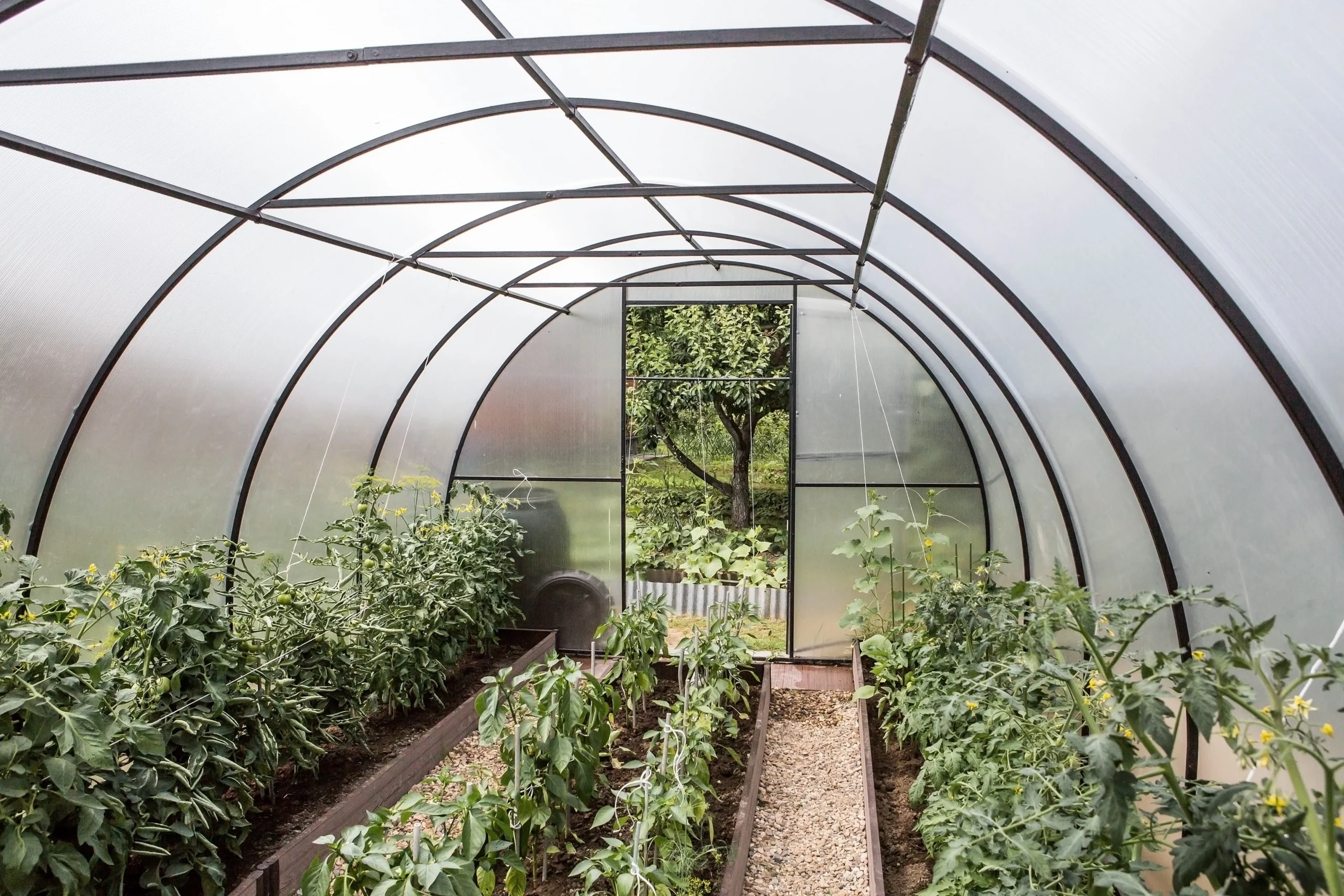
Choosing the right greenhouse height is not a matter of aesthetics, but a strategic decision that directly affects the yield, microclimate, ease of use and durability of the entire structure. An incorrect choice can lead to overheating of plants, poor ventilation, accumulation of condensation and even physical damage to crops. In this article, we will examine in detail all aspects, from agrotechnical requirements to regulatory standards in Ukraine, so that you can make an informed and only correct choice.
Why is greenhouse height so important? Key factors
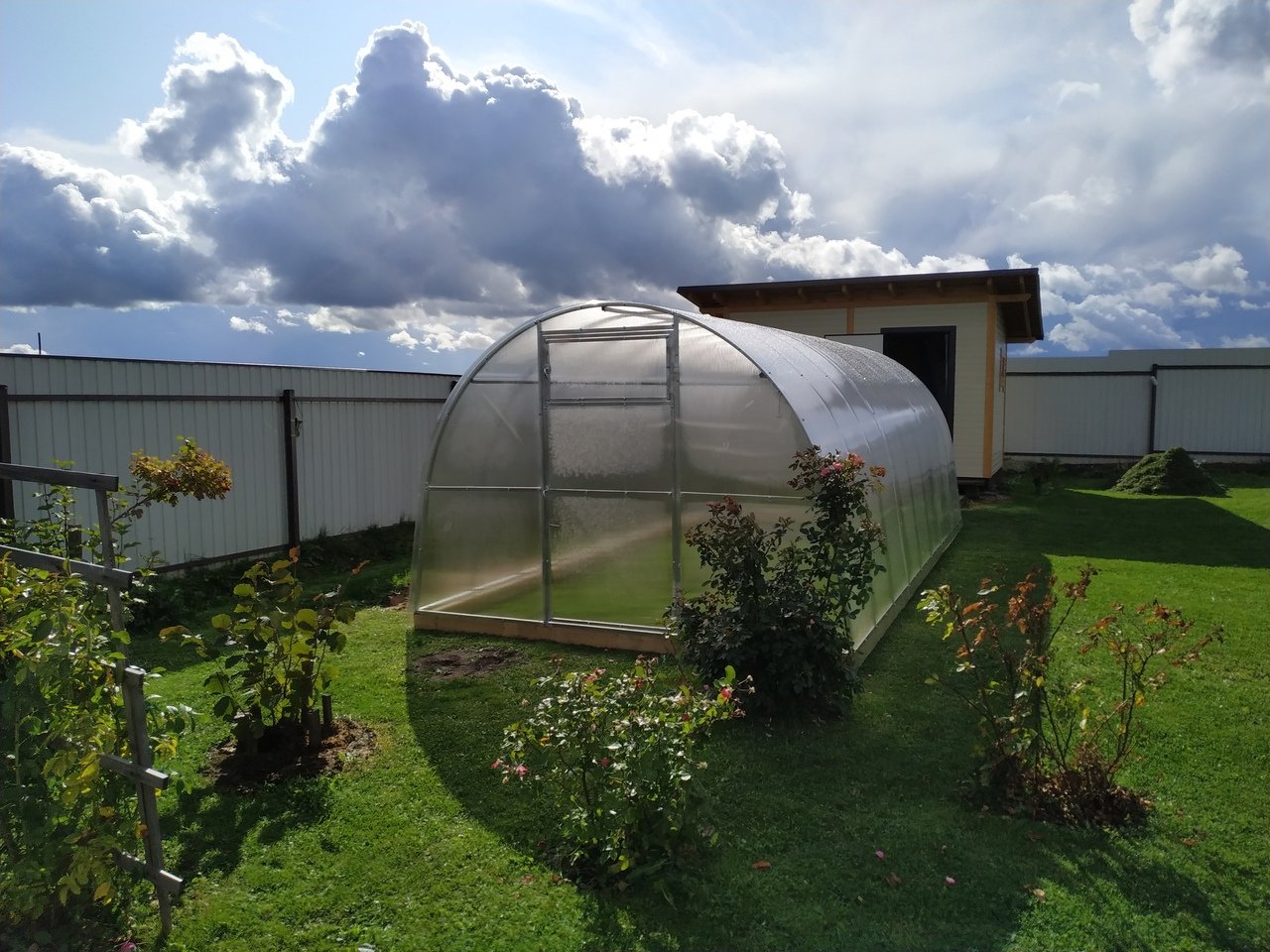
The height of a greenhouse is not just a vertical dimension. It is the volume of air, the stability of the microclimate and the space for growth. Let's consider the main factors that it affects.
Air Volume and Temperature Stability: A Detailed Technical Analysis
The statement “a large volume of air is a buffer” is an oversimplification of a complex physical process called thermal inertia. Let’s break it down into its components.
Thermal Inertia: Physics of the Process
Think of the air in a greenhouse as a heat accumulator. The larger the capacity of the accumulator (i.e. the volume of air), the more energy (heat) it can store before its “voltage” (temperature) changes significantly.
- Heating: Solar radiation passes through the covering and heats the soil, plants and structures. They, in turn, give off heat to the air by convection.
- In a low greenhouse (small volume): A small amount of air quickly becomes saturated with heat. The temperature soars rapidly. Already by 10-11 am on a sunny spring day, the temperature under the ceiling can exceed +40°C.
- In a high greenhouse (large volume): The same flow of solar energy is distributed over a much larger mass of air. It takes considerably longer to heat this volume. The temperature rises smoothly, without any shocks.
- Cooling: At night, the greenhouse loses heat through the covering.
- In a low greenhouse: A small volume of air, having accumulated a little heat, cools down very quickly. This leads to sharp nighttime cold spells and abundant condensation, since the dew point is reached faster.
- In a high greenhouse: A large volume of air, which has accumulated a significant amount of heat during the day, releases it slowly. It maintains a higher night temperature by 2-4°C compared to a low greenhouse, which is critical for heat-loving crops.
Technical example with numbers: Let's take our example: a 3x6 m greenhouse.
- Low model: Height 2 m, air volume 36 m³.
- High model: Height 3 m, air volume 54 m³.
The specific heat capacity of air is approximately 1.006 kJ/(kg °C). The density of air at 20 °C is ~1.2 kg/m³.
- Air mass in a low greenhouse: 36 m³ * 1.2 kg/m³ = 43.2 kg.
- Air mass in a high greenhouse: 54 m³ * 1.2 kg/m³ = 64.8 kg.
This means that to increase the temperature by 1°C in a tall greenhouse, it takes 50% more heat energy than in a low greenhouse. That is why it heats up and cools down much more slowly.
Temperature stratification and its influence
Warm air always rises. This process is called stratification.
- In a low greenhouse (2 m high): The overheating zone is dangerously close to the plants. If a tomato has grown to 1.8 m, its top is in a layer of air with a temperature of +45°C, while the roots may have a comfortable +22°C.
- In a high greenhouse (3 m high): The hottest air accumulates at a height of 2.5-3 m, far above the growth point of the plants. At the level of the upper tomato brushes (1.8-2.0 m), the temperature will be much more stable and close to optimal. This creates a safe buffer zone between the plant and the overheating zone.
Real examples and impact on plants
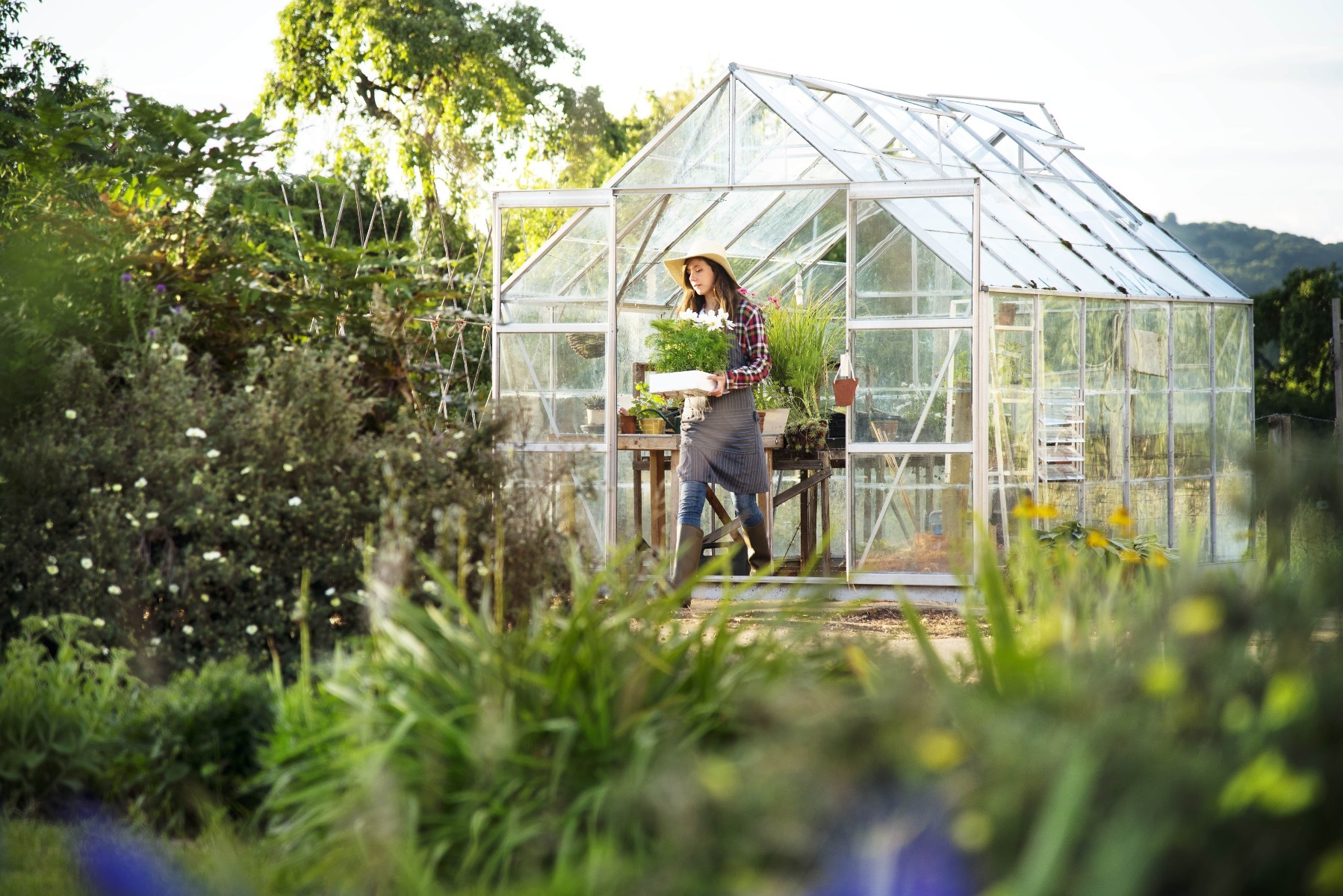
Let's see how these physical processes translate into agronomic results using the example of indeterminate tomato.
Scenario 1: Low greenhouse in May, southern Ukraine
- 08:00: Temperature +14°C. The plant is normal.
- 11:00: The sun is at its zenith. The air temperature at the 1.5 m level reaches +32°C. Under the ceiling (2 m) it is already +42°C.
- Plant reaction:
- Pollen sterilization: At temperatures above +32..+35°C, tomato pollen becomes sterile. Flowers on the 4th and 5th brushes, which are blooming at this time, are not pollinated. Result: gaps in brushes, loss of yield.
- Midday depression: To avoid losing moisture, the plant closes the stomata on its leaves. CO₂ absorption stops, photosynthesis stops. The plant does not grow or develop, but fights for survival.
- Top burn: The youngest, most tender leaves at the top of the plant become thermally burned, curl up and dry out. Growth stops.
Scenario 2: High greenhouse under the same conditions
- 08:00: Temperature +14°C.
- 11:00: The sun is at its zenith. Thanks to the large volume of air, the temperature at the 1.5 m level rises smoothly to +28°C. Under the ceiling (3 m) — +35°C.
- Plant reaction:
- Pollen is fertile: Temperature in the flowering zone is in the optimal range. Pollination is successful. Result: full, well-formed brushes.
- Photosynthesis continues: The stomata are open, the plant actively absorbs carbon dioxide and synthesizes organic substances. Active growth and filling of fruits is underway.
- The top is safe: The growing point is in a comfortable temperature zone, far from the overheated air under the ceiling.
Conclusion: Two plants of the same variety, on the same day, in greenhouses of different heights show radically different results. In a low greenhouse, the plant is in a state of constant stress, which directly leads to a loss of 30-50% of potential yield. In a high greenhouse, conditions close to ideal are created, allowing the plant to realize its genetic potential. This is not just a question of comfort, it is a question of profitability.
Ventilation and Humidity: From the Physics of Convection to Plant Health
If the temperature regime is about energy in a greenhouse, then ventilation and humidity are o mass transfer And disease preventionThe height of the structure here plays the role of not just an amplifier, but a fundamental factor determining the efficiency of this process.
The Smokestack Effect: A Technical Explanation
Natural ventilation in a greenhouse works on a principle known in engineering as “gravity pressure” or the “stack effect.” The driving force behind this process is the difference in density between the warm air inside the greenhouse and the cooler (and denser) air outside.
- Driving force: Warm and humid air inside the greenhouse (especially that which has been heated by the sun and saturated with moisture from the evaporation of plants) has a lower density and tends to rise.
- The role of height: The effectiveness of this lift is directly proportional to the height of the column of warm air. The higher the greenhouse (and therefore the location of the upper vents), the greater the pressure difference between the lower inlet openings and the upper outlet openings.
- In a low greenhouse (height 2 m): The difference in height between the window in the door (conditionally 1 m) and the top point (2 m) is only 1 meter. The pressure difference created is very small. Air exchange is sluggish, chaotic and strongly dependent on the wind outside. In windless weather, the air practically stagnates.
- In a high greenhouse (height 3 m and more): The height difference between the lower inflow (1 m) and the upper transom (3 m) is 2 meters. The pressure difference is twice as high! This creates a stable, powerful and directed air flow: cool dry air comes in from below, passes through the plants, taking away excess heat and moisture, heats up, rises and is thrown out.
Technical note: The air velocity in natural convection can be approximated by the formula where it is proportional to the square root of the product (h * ΔT), Where h — the difference in height between the input and output, and ΔT — the difference in temperature inside and outside. Doubling h has a tremendous impact on the efficiency of ventilation.
Leaf zone microclimate and agronomic implications
Now let's take this physics to the level of a single plant. Plants constantly evaporate water - this process is called transpiration. As a result, a thin, almost motionless layer of air with a humidity close to 100% forms around each leaf. This layer is called the boundary layer.
- In a low, poorly ventilated greenhouse:
- Because of the weak air movement, this boundary layer becomes thick and stable. It envelops the leaf like a damp blanket.
- When the greenhouse temperature drops at night, it is this moisture-saturated air that first reaches the dew point. The moisture condenses directly on the leaf surface.
- Result: Leaves remain wet for 8-12 hours (all night).
- In a high, well-ventilated greenhouse:
- A stable upward air flow constantly “blows away” and destroys the thick boundary layer.
- The moisture evaporated by the plant does not linger near the leaves, but is immediately carried upward by the general air flow.
- Result: The leaf surface remains dry or dries very quickly. The risk of condensation on the plants is minimal.
Real Life Example: Phytophthora infestans Threat on Tomatoes
Late blight is not just a disease, it is a fungus-like organism whose spores require drip moisture to germinate.
- Low greenhouse scenario:
- Evening: Humidity reaches 95-100%.
- Night: Temperatures drop, condensation forms on the leaves.
- Conditions for infection: Phytophthora spores that land on a leaf are in ideal conditions - in a drop of water. They only need 4-6 hours in a humid environment to germinate and penetrate the leaf tissue.
- Result: In the morning you see a healthy plant, but it is already infected. After a few days, characteristic spots appear. Forced use of fungicides, loss of crops and death of plants.
- Scenario in a high greenhouse:
- Evening-night: Effective ventilation removes excess moisture. The relative humidity in the greenhouse does not reach the critical 100%, and if it does, then only for a short time. If condensation does form, it is on the very top of the cover, and not on the leaves.
- Conditions for infection: Phytophthora spores fall on a dry leaf. Without dripping moisture, they cannot germinate. The disease development cycle is interrupted at the very first stage.
- Result: Plants remain healthy with minimal or no chemical pesticides.
Conclusion: Greenhouse height is your main tool for non-chemical plant protection. It is a preventive measure that creates an environment unfavorable for the development of the most dangerous pathogens, such as late blight, cucumber downy mildew, gray mold, and powdery mildew. Saving on height today results in tomorrow's costs for fungicides and direct crop losses.
Room to Grow: From Plant Potential to Real Harvest
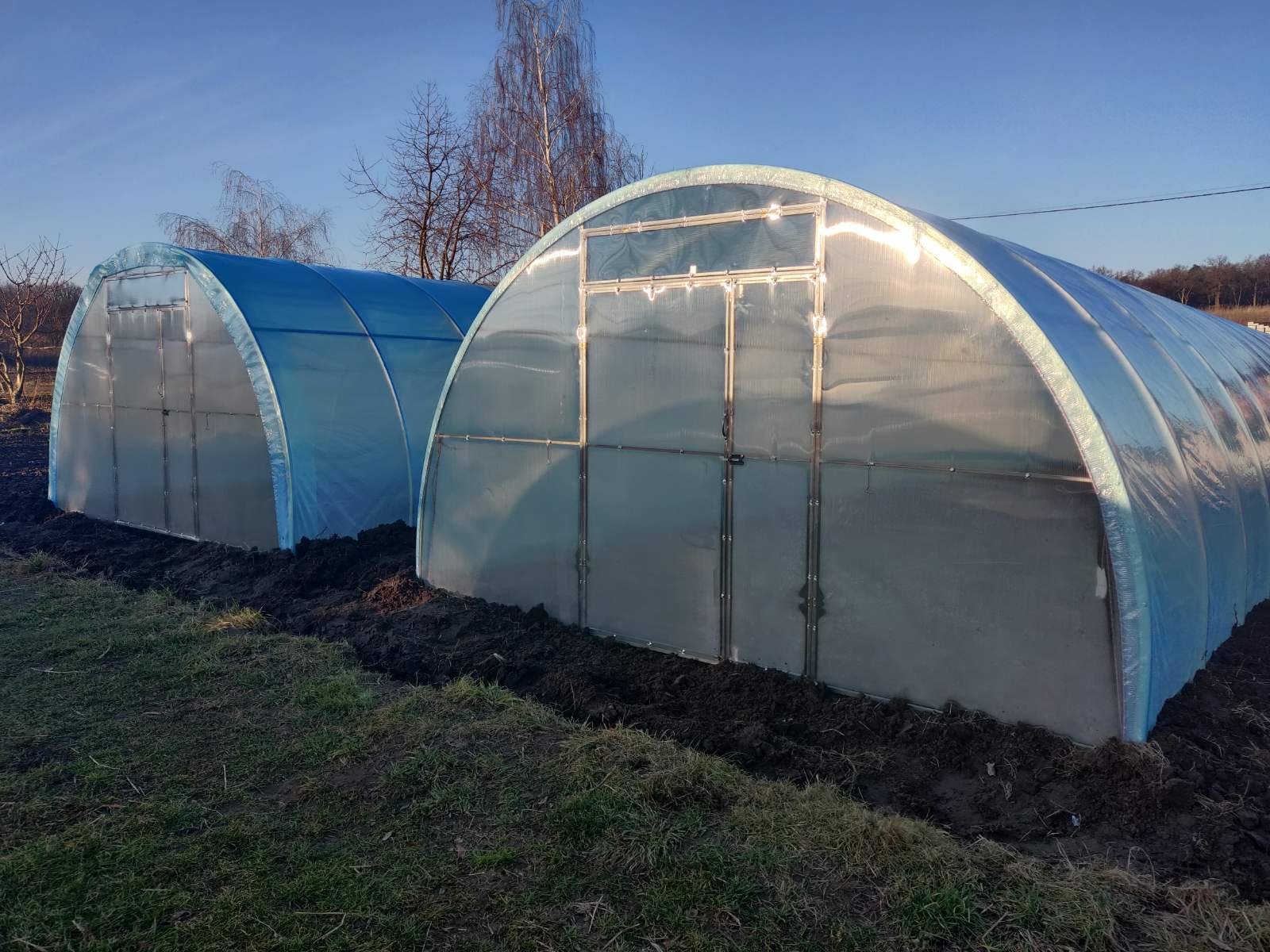
The biological basis of indeterminate (tall) varieties of tomatoes, cucumbers, and to a lesser extent peppers is their genetic program for continuous growth. Unlike determinate (bush) varieties, which form 4-6 brushes and “top” (finish growth) themselves, indeterminate varieties will grow upward, laying new flower brushes, as long as the conditions allow them: light, heat, nutrition and physical space.
The Arithmetic of Harvest: How Height Directly Determines Fruit Quantity
The yield of indeterminate tomatoes is a direct derivative of the number of formed and filled brushes on one plant per season. Let's consider standard agricultural technology.
- Formation of clusters: A healthy tomato plant will form a new cluster of flowers approximately every 3 leaves. In centimeters, this corresponds to a stem growth of 20-25 cm.
- Growing season: In the conditions of Ukraine (for example, in the Odessa region), the effective fruiting season in a film or polycarbonate greenhouse lasts from May to the end of September, which allows for the formation of a large number of clusters.
Now let's simulate two scenarios in greenhouses of the same area but different heights.
Scenario 1: Low arched greenhouse (Working height to trellis ~1.8 m)*
- The plant is planted, growing and forming the first brush at a height of ~40 cm from the ground.
- There remains 1.4 m (140 cm) of vertical space.
- We calculate the potential: 140 cm / 25 cm (average internode) = 5.6 brushes.
- In total, the plant is guaranteed to produce 6-7 clusters (including the first), after which its top will rest against the ceiling or trellis.
- Forced decision: The farmer must pinch (stop) the growing point. The plant stops forming a new crop. Its potential is artificially cut off in the middle of the season.
Scenario 2: High greenhouse (Working height to trellis ~2.5 m)*
- The plant also forms the first brush at a height of 40 cm.
- There remains 2.1 m (210 cm) of vertical space.
- We calculate the potential: 210 cm / 25 cm = 8.4 brushes.
- In total, you can get 9-10 brushes on a plant.
- Difference: +3 brushes on each plant.
Converting to money: Let's assume that the average weight of a hybrid tomato bunch is 800 grams. 3 bunches * 0.8 kg = 2.4 kg of additional yield from one bush. If 100 plants grow in a greenhouse, the difference will be 240 kg of selected tomatoes. This is a direct economic effect from an additional 70 cm of height.
The working height is not the height of the greenhouse at the ridge, but the height to the stretched wire (trellis) on which the plant is attached. It is usually 20-30 cm below the ceiling.
Fruit Quality and Plant Health: The Hidden Consequences of Overcrowding
The height limitation affects not only the quantity but also the quality of the harvest, as well as the phytosanitary condition.
- Light: When the top of the plant reaches the ceiling, it does not stop immediately. The leaves begin to grow horizontally, intertwining with neighboring plants. A dense “tent” of upper leaves is formed, which:
- Shades the middle and lower brushes: Fruits in the shade ripen more slowly, accumulate less sugar (have a lower Brix value, i.e. are less sweet) and are poorly colored.
- Promotes disease: There is virtually no air movement in this dense mass of leaves. It is an ideal environment for the development of gray mold (Botrytis) on the stems and Cladosporiosis (brown spot) on the leaves.
- Physiological stress: Forced pinching disrupts the hormonal balance of the plant. It tries to compensate for the loss of the main growth point and begins to actively throw out lateral shoots (side shoots) with double force. This requires additional labor from the farmer for side shoots, and the plant spends precious nutrients not on filling the fruit, but on unnecessary green mass.
A real example on cucumbers: Indeterminate cucumber grows even faster than tomatoes. In a low greenhouse, its central stem reaches the ceiling already 1.5 months after planting. Further manipulations to throw the stem over the trellis and lower it down in conditions of limited height turn into torture. The stems break, the leaves are injured, which opens the gates for infections (especially downy mildew). In a high greenhouse, you can easily grow a crop in one stem, promptly removing the lower leaves and lowering the entire vine as a whole - this is a professional technology that is impossible in a low building.
Expert's conclusion: The minimum height at the side wall (at the lowest point where the plants are planted) of 1.8 meters is not a recommendation, but a necessary technical condition for the profitable cultivation of tall crops. It allows you to not only get more brushes, but also maintain the health of the plants, improve the quality of the fruits and significantly simplify the care, saving your time and effort.
Ease of use and technical equipment: Investment in efficiency and the future
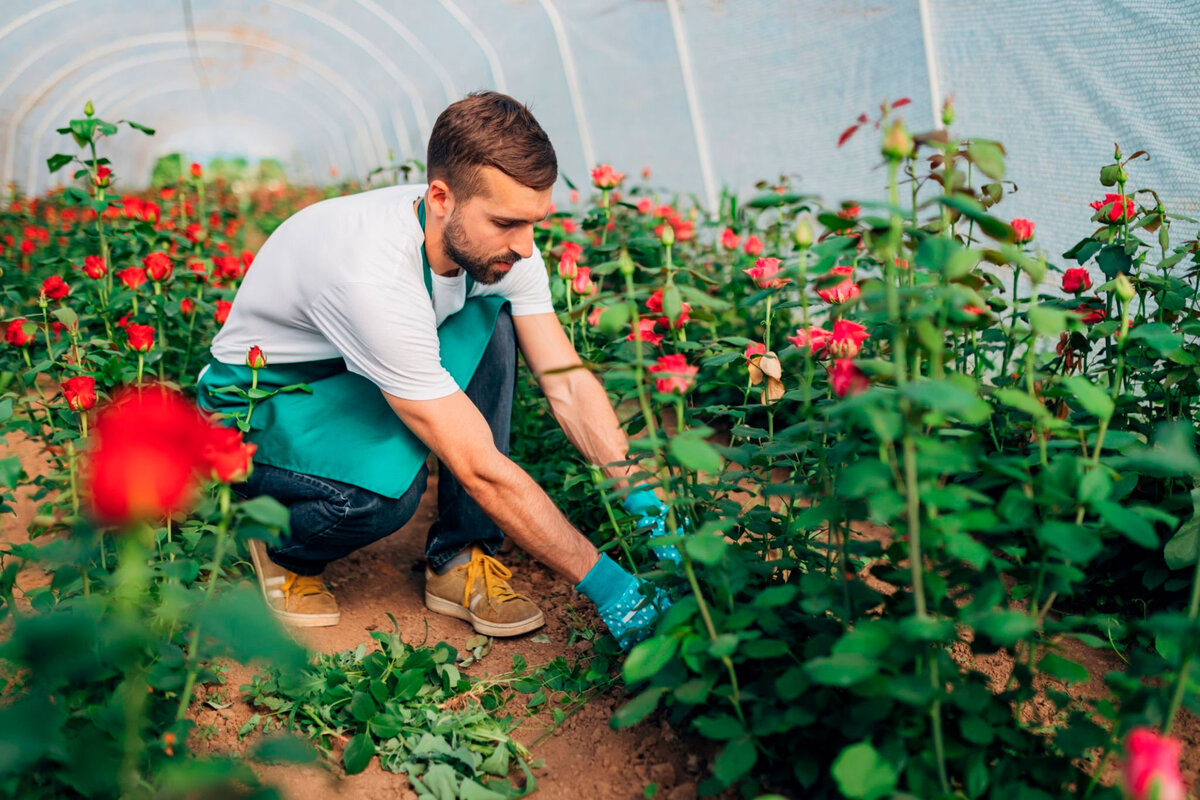
The height of the greenhouse directly affects two interrelated aspects: the physical health and comfort of a person (ergonomics) and the possibility of using modern agricultural solutions (technical equipment). Saving on height here results in daily inconveniences and technological backwardness.
Ergonomics: Your Back Will Thank You
Working in a greenhouse is not a one-time foray, but hours of monotonous labor: tying up, pinching out side shoots, spraying, harvesting. The position of the body during these operations is critically important.
- “Working area” in different types of greenhouses:
- In a low arched greenhouse (3 m wide, 2 m high): The area where you can stand upright (say, for a person 1.8 m tall) is a narrow strip no more than 1 meter wide in the center. When working with plants in the side rows, you are forced to constantly be in a bent or semi-bent position. After an hour of such work, the load on the lumbar spine becomes colossal.
- In a high gable or arched greenhouse (height from 2.5 m): The comfortable “standing” zone covers almost the entire area. You can move freely between the rows without bowing or bending. You can stand up to your full height at any point.
Real example: Spraying procedure For high-quality treatment of plants from pests or diseases, it is necessary to cover the entire surface of the leaf with a solution, including the underside.
- In a low greenhouse: To treat the tops of plants near the side wall, you have to bend under the low arch, holding the sprayer in your hands. It is almost impossible to achieve uniform spraying in such conditions. Some leaves will be “flooded” with the preparation, and some will remain untouched, nullifying the entire treatment.
- In a high greenhouse: You stand upright and freely manipulate the sprayer rod, directing the spray torch at any angle. The treatment is faster, better and with less product consumption, as you have full control over the process.
Conclusion on ergonomics: A low greenhouse provokes chronic fatigue and back problems. A high greenhouse turns work into an effective and healthy process. The difference in labor productivity can reach 30-40% only due to reduced fatigue.
Possibility of installation of equipment: Step into modern agricultural technology
Height is a platform for modernization. Many modern technologies that dramatically increase yields and stability cannot be physically installed in a low greenhouse.
A) Supplementary lighting systems (phytolamps)
- Technical aspect (Inverse square law): Light intensity decreases proportionally to the square of the distance to the source. In order to illuminate a wide area evenly, the light should be located at a considerable height above the plants (usually 0.8 – 1.5 meters).
- In a low greenhouse: You cannot hang the lamp at the right height. You have to either place it too close, which causes burns to the tops and creates a tiny but bright “light spot”, or use many low-power lamps, which is not cost-effective. Uniform illumination is impossible to achieve.
- In a high greenhouse: You can easily place powerful phytolamps at the optimal height. This allows one lamp to cover a large area evenly, using every watt of electricity as efficiently as possible. There is also enough space left for heat to escape from the lamp.
B) Curtain systems (thermo- and light-reflecting screens)
This is the most effective technology for combating summer overheating and saving heat in winter. The screen is essentially a roll of fabric that is rolled out under the ceiling of the greenhouse.
- Space requirements: For installation of the screen folding/unfolding mechanism and for the assembled screen itself, a minimum of 40-60 cm of free space is required between the trellis (where the plants hang) and the supporting structures of the roof.
- In a low greenhouse: There is simply no such space. Installing a screen is impossible. You are doomed to use primitive methods of combating heat: nets over the greenhouse (which reduce illumination even in cloudy weather) or whitewash (which is washed away by rain).
- In a high greenhouse: Installation of a shading system is not a problem. You get a tool for precise microclimate control: close the screen in the heat - the temperature drops by 5-10°C; close it at night in winter - save up to 40% on heating. Considering the climate of the south of Ukraine, especially in the Odessa region with its hot summer, the presence of a shading screen is a decisive factor for harvesting in July-August.
B) Horizontal fans (HAF – Horizontal Air Flow)
Axial fans are used to mix air, equalize temperature and humidity throughout the entire volume and prevent stagnant zones.
- Safety and Efficiency: These fans should be installed high above people's heads and plant tops to create a smooth horizontal air flow.
- In a low greenhouse: Installation is impossible or dangerous.
- In a high greenhouse: Fans are easily mounted at a height of 2.5-3 meters, providing ideal air circulation, which you can only dream of in a low greenhouse.
Bottom line: Choosing a high greenhouse is not overpaying for “air.” It is an investment in your own health, in the efficiency of your work, and in the possibility of future technological growth. A low greenhouse is a dead-end path that forever limits you to basic technologies and forces you to put up with inconveniences and losses.
Optimal Height for Different Types of Greenhouses: Technical Data and Recommendations
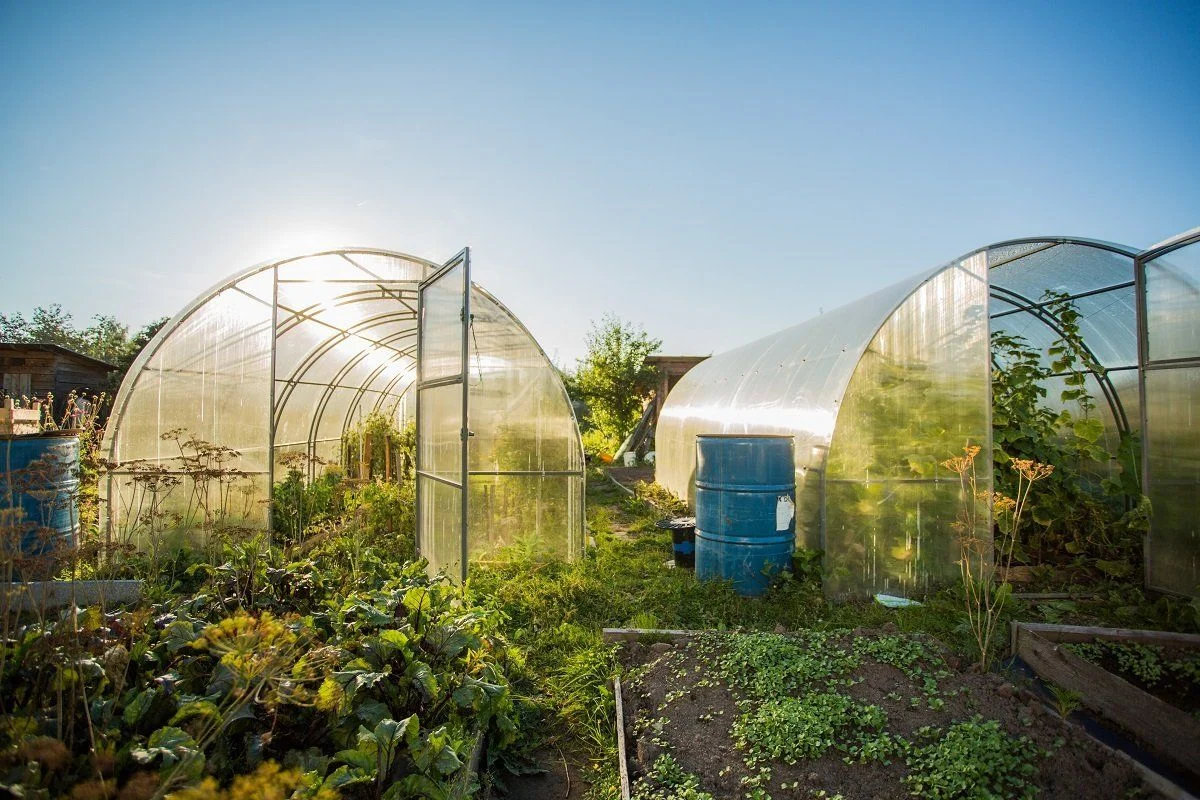
Let's look at specific figures for the most popular greenhouse designs in Ukraine.
Arched greenhouses
This is the most common type due to its availability and ease of assembly. The key parameter here is the height at the ridge (the highest point).
Important: Pay attention not only to the height at the ridge, but also to the height of the straight wall (if there is one). For arched greenhouses without straight walls, it is critical that the height at the edge of the bed is at least 1.5 meters, otherwise the plants will rest against the inclined wall.
Gable (house-shaped) greenhouses
Classic shape providing maximum internal volume and comfort.
The advantage of gable greenhouses: Almost vertical side walls allow the use of 100% area for growing tall crops.
Industrial block greenhouses (Dutch)
They are the benchmark in the greenhouse world. Their standards are designed for maximum efficiency.
- Height to the tray (ridge): From 4.5 to 6.0 meters and higher.
- Height to hanging trellis: Usually at 4-5 meters.
This altitude creates a huge air buffer, ideal conditions for climate control and allows for fully automated growing processes.
Standards and approvals in Ukraine
In Ukraine, there are no strict state standards (DSTU) regulating the height of private summer cottage greenhouses. The choice is up to the owner. However, when building large farm and industrial greenhouse complexes, the following principles are followed:
- Building codes (DBN): Wind and snow loads for a specific region are taken into account. The higher the greenhouse, the higher its windage and frame strength requirements. For southern regions (Odessa, Kherson regions), wind load is a key factor.
- Agronomic requirements: To obtain organic certification or participate in government support programs, there may be requirements for greenhouse volume per unit area, which indirectly affects the height.
- Material marking: Polycarbonate used for covering must be marked with thickness, density and presence of UV protective layer. For high greenhouses it is recommended to use thicker (from 6-8 mm) and denser polycarbonate due to increased loads.
Practical advice for Ukraine: Given the hot summer in the southern and central regions, do not skimp on height. A greenhouse 2.5-3.0 meters high will cope with the summer heat much better than a two-meter structure.
Conclusion and final recommendations: So which height is better?
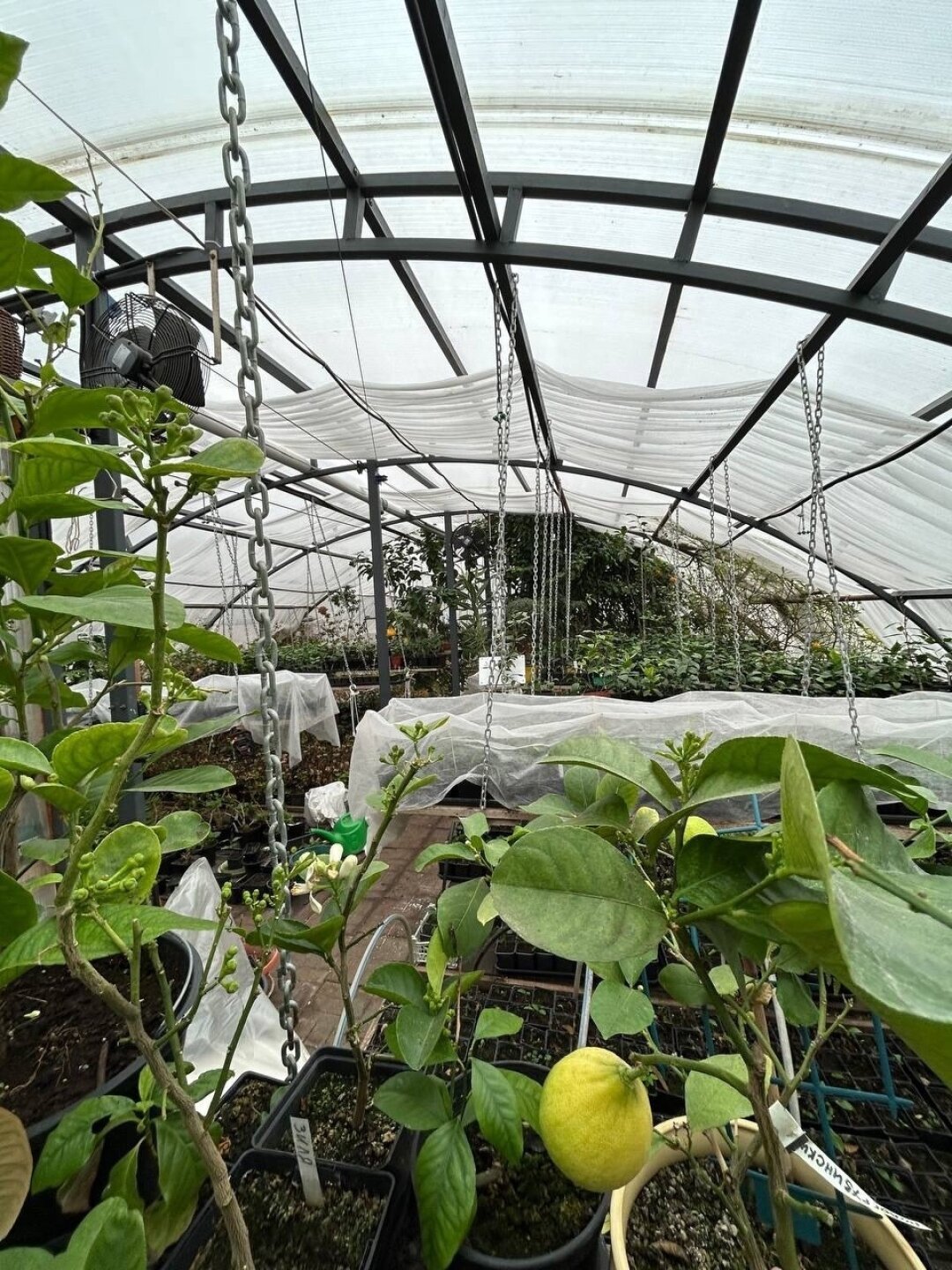
There is no universal answer of “X meters.” The optimal height is a balance between your goals, budget, and climate conditions.
- For low-growing crops (strawberries, greens, radishes): A ridge height of 2.0 – 2.2 m is sufficient.
- For indeterminate tomatoes and cucumbers in summer cottage conditions: The ideal choice is an arched greenhouse 2.2 – 2.5 m high or a gable greenhouse with a wall height of 1.5 m and a ridge of 2.4 m.
- For a serious hobby or small business: Consider greenhouses 4-5 meters wide and 2.8 – 3.5 m high at the ridge. This will allow you to grow any crops and use additional equipment.
- For farming: Design structures at least 4 meters high to ensure a stable microclimate and the possibility of automation.
Golden rule: When in doubt between two height options, always choose the higher one. The extra cost of materials will pay off with healthier plants, higher yields, and ease of use. Your back will thank you, and the plants will thank you with abundant fruiting.





